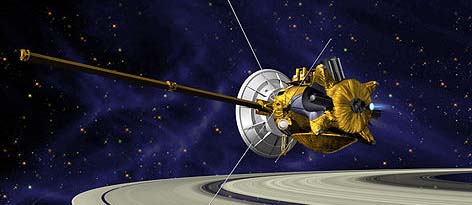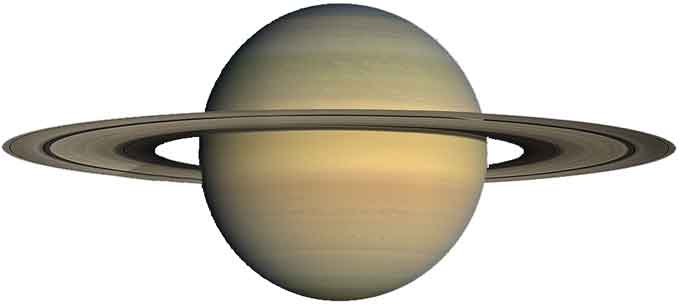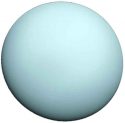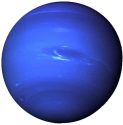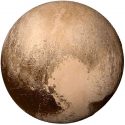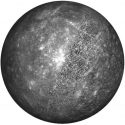- Mass: 5.683 × 10^26 kg
- Diameter: 116,464 km
- Year: 29 years
- Moons: 62
- Temperature: -178 C (-288 F) average
- Gravity: 10.4 m/s^2
- Distance from Sun: 1.43 billion km
- Speed around Sun: 9.7 km/sec (6 miles/sec)
Saturn is the sixth closest planet to the Sun. It is the second largest planet in our solar system and 95 times more massive than the Earth. It is very beautiful and famous planet due to its beautiful rings that orbit around it. It comes in the class of planets known as the “Gas Giants” because it doesn’t have the solid surface as it is on our Earth.
Saturn spins so fast that its day length is 10.7 hours, but its year is 29.4 Earth years because its orbit is much farther than the Earth. Saturn is the least dense planet among all planets in the Solar System, even less dense than water, means it will float in the huge ocean of water (if it were possible).
Atmosphere of Saturn
The winds of Saturn are very fast. The fastest wind speed recorded was 500 m/s (1800 km/h), which makes it the second planet in fastest wind speeds. The fast spin of Saturn leads to very strong hurricane-like storms. Due to its fast spinning, Saturn’s shape is not perfectly round, but bulges at the middle.
Composition of Saturn
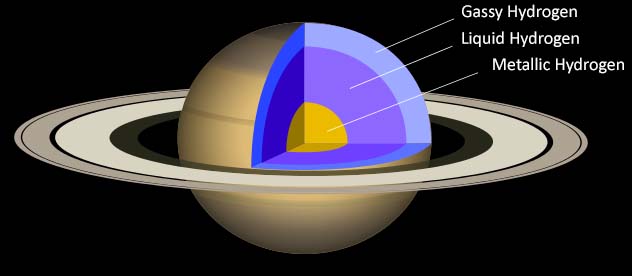
Saturn is composed of 96% Hydrogen, 3% Helium and 1% other gasses. Since the percentage of hydrogen is very high, which is the lightest element makes the Saturn less dense among the planets in the solar system. There is no surface on the entire planet, but at very great distance below the hydrogen becomes liquid than even below that depth hydrogen turns into metal.
Saturn Rings
Saturn is probably most famous for its system of rings that orbits around it. The system of rings start from 6,630 km above the equator and spreads up to 120,700 km outward, but amazingly 20 meters in thickness. The rings are categorized into seven categories, known as Ring A, Ring B, Ring C, Ring D, Ring E, Ring F and Ring G.
The rings of Saturn are made up of dust, ice particles and rocks. In 2010, Cassini Spacecraft from NASA went through the gap between Ring F and Ring G and it is orbiting the planet today.
Discovery of Saturn
Saturn is the bright object so it is visible with naked eyes. Humans had known about it since ancient times. In 1610, Galileo first observed the Saturn with a Telescope and found that there is something around the Saturn, but he didn’t recognize it as rings. Rings were first noted by Christian Huygens.
The first flyby to Saturn was made by pioneer 11 spacecraft in 1979. Then Voyager 1 and Voyager 2 captured high-resolution images of Saturn during the flyby. In 2004, Cassini–Huygens spacecraft entered the orbit of Saturn to study the planet closely.
